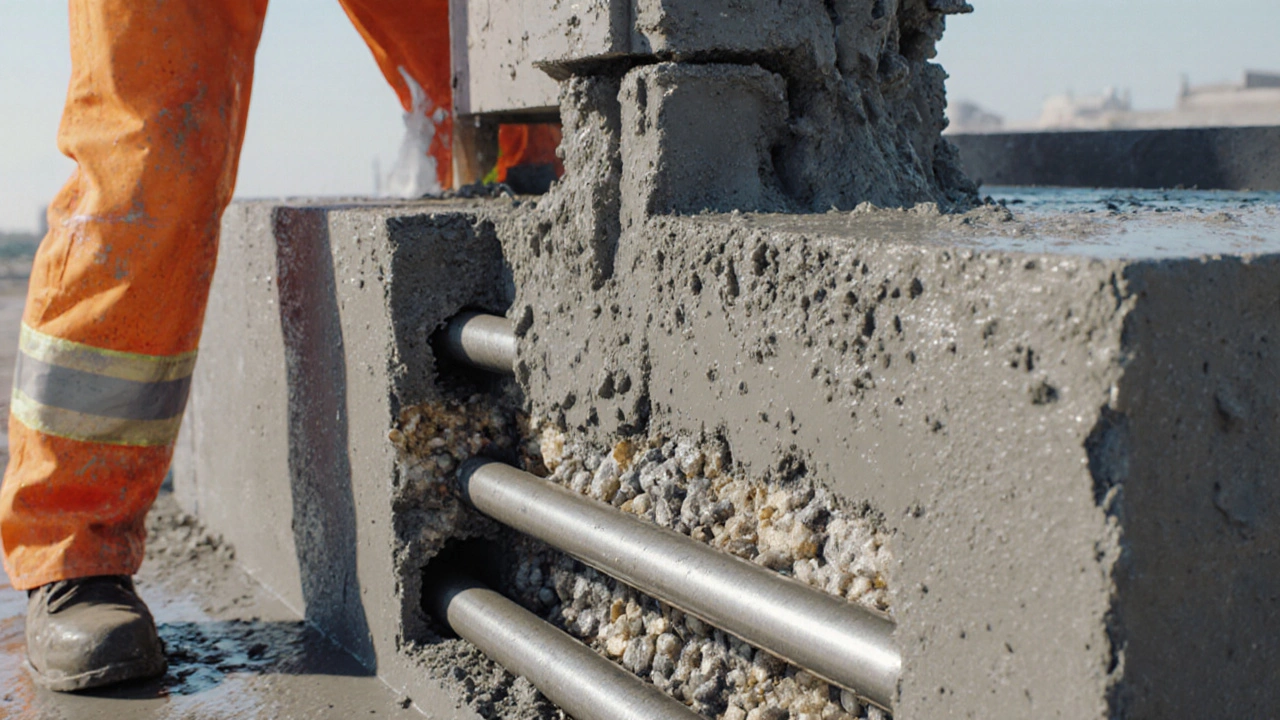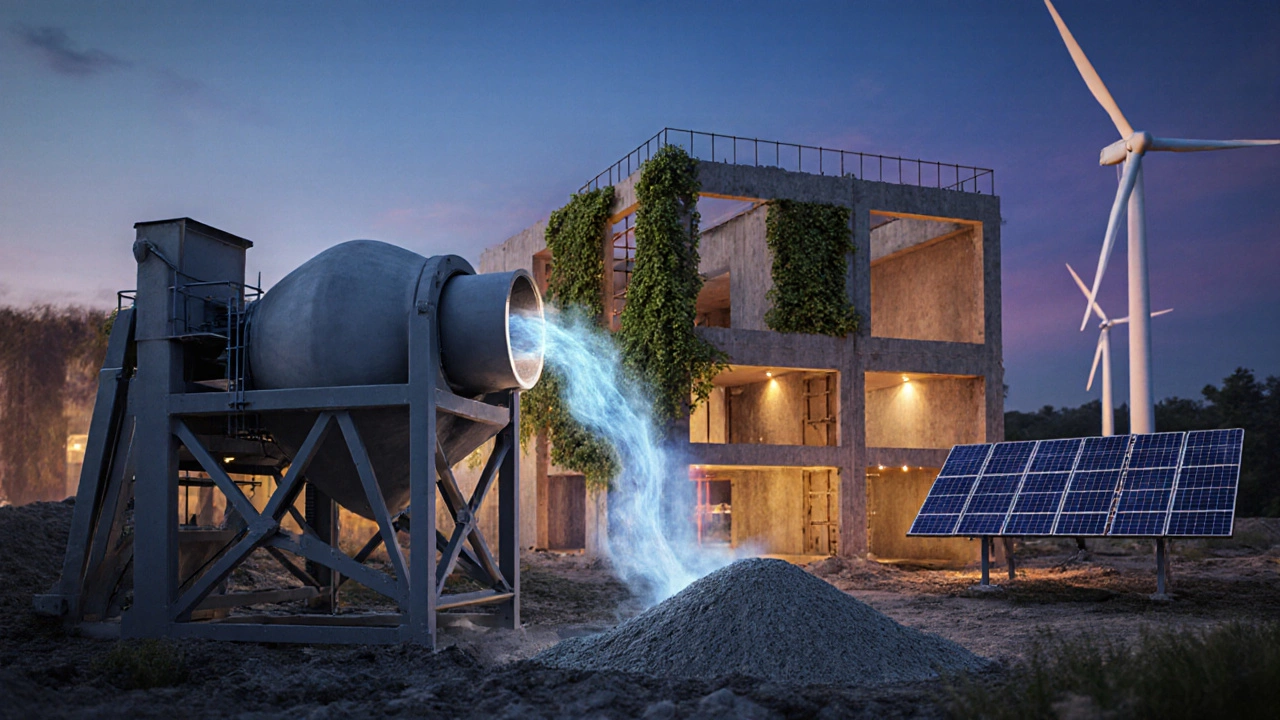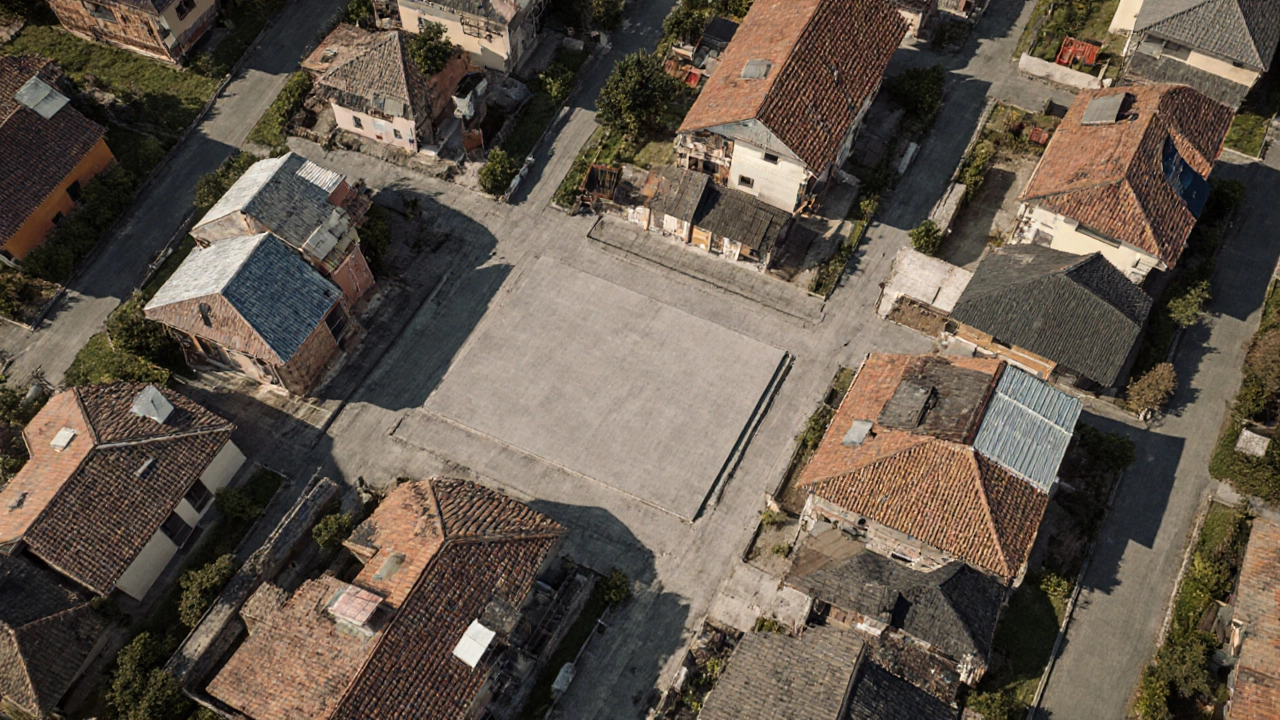When you start planning a new house, the first question that pops up is usually, “What material should I build with?” The answer isn’t a trick - worldwide data shows a single material dominates the residential market. Below we break down why that material holds the crown, how it stacks up against the other popular choices, and what you should weigh before locking in a decision for your own project.
Global Snapshot: Which Material Tops the List?
According to the 2024 World Construction Index, Concrete is the most widely used building material for homes, accounting for roughly 55 % of the total volume of residential construction worldwide. The figure comes from tracking 1.2 billion cubic meters of residential builds across 140 countries in the past five years. Even in regions where timber traditionally dominates, such as North America, concrete still claims a larger share when you count foundations, slabs, and load‑bearing walls.
Why Concrete Reigns Supreme
Concrete’s popularity isn’t a coincidence. It blends three basic ingredients - Cement the binding agent that hardens when mixed with water, Aggregates sand, gravel or crushed stone that give volume and strength, and water - into a material that can be poured, molded, and cured into virtually any shape. When reinforced with steel bars (rebar), you get Reinforced concrete a composite that handles both compression and tension, making it ideal for foundations, floors, and even entire load‑bearing walls.
- Durability: Properly mixed concrete lasts 50‑100 years with minimal maintenance.
- Fire resistance: It doesn’t burn, and it helps keep interior temperatures low during a blaze.
- Thermal mass: The material absorbs daytime heat and releases it at night, reducing heating‑cooling loads.
- Versatility: From smooth slabs to textured finishes, you can color, stamp, or expose aggregate for aesthetic effect.
Top 5 Residential Materials - How They Compare
Below is a quick side‑by‑side look at the five materials that together make up over 90 % of all homes built today.
| Material | Typical Cost (USD / sq ft) | Strength (psi) | Carbon Footprint (kg CO₂ / m³) | Best For |
|---|---|---|---|---|
| Concrete | 4‑7 | 2,500‑5,000 | 310‑400 | Foundations, slabs, multi‑story walls |
| Wood (Timber framing) | 5‑9 | 1,500‑3,500 | 70‑140 | Single‑family homes, quick builds |
| Steel | 8‑12 | 30,000‑50,000 | 1,900‑2,200 | High‑rise, seismic zones |
| Brick | 6‑10 | 3,000‑5,500 | 200‑300 | Low‑rise, aesthetic facades |
| Bamboo | 3‑6 | 1,800‑4,000 | 20‑35 | Sustainable projects, tropical climates |

Pros and Cons of the Leading Materials
Knowing the numbers helps, but each material also brings practical quirks.
- Concrete - Pro: Low maintenance, high strength. Con: Heavy, requires skilled labor for proper pour, higher carbon footprint.
- Wood - Pro: Fast erection, renewable (if sourced responsibly). Con: Susceptible to rot, termites, and fire without treatment.
- Steel - Pro: Excellent tensile strength, great for seismic design. Con: Expensive, prone to corrosion unless protected.
- Brick - Pro: Aesthetic appeal, good thermal mass. Con: Labor‑intensive, slower build time.
- Bamboo - Pro: Extremely low carbon, rapid growth. Con: Not as widely regulated, limited availability outside tropical zones.
Choosing the Right Material for Your Home
Even though concrete tops the global chart, the "best" option depends on four key factors:
- Climate: In hot, arid zones, concrete’s thermal mass reduces cooling loads. In damp, termite‑prone regions, a treated timber frame or steel may be wiser.
- Seismic risk: The International Building Code sets out design standards for earthquake‑resistant structures favors reinforced concrete shear walls or steel moment frames.
- Budget and timeline: Wood framing can shave weeks off a schedule, while concrete pours require curing time and skilled crews, adding cost.
- Environmental goals: If a low carbon imprint is non‑negotiable, consider bamboo or engineered timber, but factor in local availability and long‑term durability.
Running a quick decision matrix (cost vs. durability vs. carbon) often points to a hybrid approach: concrete foundations, timber walls, and steel connectors where needed.
Emerging Trends: Making Concrete Greener
Because concrete dominates the market, researchers focus on cutting its carbon punch. Two breakthroughs deserve a mention:
- Supplementary Cementitious Materials (SCMs): Replacing up to 30 % of Portland cement with fly ash, slag, or limestone reduces emissions by 10‑20 % without harming strength.
- CarbonCure technology: Injecting captured CO₂ into the mix mineralizes the gas, locking it into the concrete and improving compressive strength.
Homeowners who care about sustainability can ask their contractor whether the mix includes SCMs or carbon‑reduction additives.

Common Misconceptions About the “Most Used” Material
Many people assume “most used” equals “best for every house.” That’s a shortcut. Here are the top myths:
- Myth 1: Concrete is always cheaper. Reality - While the raw material is inexpensive, labor, formwork, and curing can make the total cost higher than a simple timber frame in low‑rise builds.
- Myth 2: Concrete homes never need repairs. Reality - Cracks from settlement, moisture intrusion, or poor mix design do happen and require sealing.
- Myth 3: Using concrete means a high carbon footprint. Reality - Modern mixes with SCMs can slash the carbon impact by up to one‑third compared with a traditional mix.
Quick Checklist for Material Selection
- Define climate zone and any seismic requirements.
- Set a realistic budget and timeline.
- Prioritize durability vs. sustainability based on personal values.
- Ask for mix design details - cement content, SCMs, additives.
- Confirm local building codes (e.g., International Building Code) allow your chosen material.
Frequently Asked Questions
Is concrete really the most used material for homes in the United States?
Yes. While wood frames dominate new single‑family houses, concrete accounts for over 60 % of the total volume when you include foundations, slabs, and masonry walls, according to the 2024 U.S. Census of Construction.
Can I combine concrete with other materials to lower the carbon footprint?
Absolutely. Adding fly ash, slag, or limestone filler (SCMs) can replace a portion of Portland cement, cutting emissions. You can also use insulated concrete forms (ICFs) that combine concrete cores with high‑R‑value foam to reduce heating‑cooling loads.
How does the cost of bamboo compare to concrete?
Bamboo is typically cheaper per square foot (US $3‑6) than poured concrete (US $4‑7). However, transportation, treatment, and limited local supply can raise the final price, especially outside tropical regions.
What maintenance does a concrete home require?
Mostly periodic sealing of exposed surfaces and checking for cracks after settlement. Proper waterproofing and good drainage keep most issues at bay for decades.
Is reinforced concrete stronger than steel alone?
Reinforced concrete excels in compression and, thanks to the steel rebars, can also handle tensile forces. Pure steel offers higher tensile strength, but without concrete it can buckle under compression.

